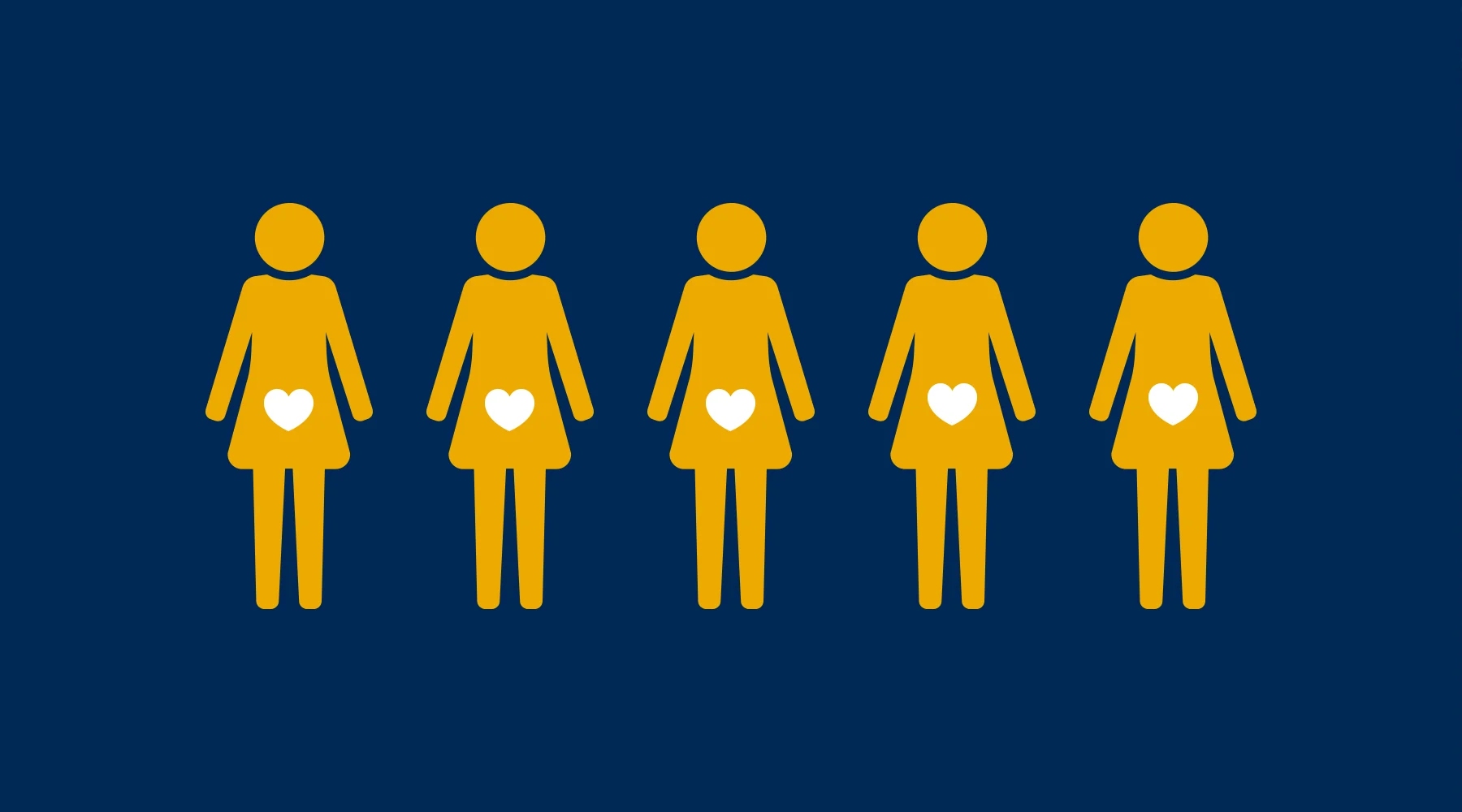Topics
- Article
- Research Studies
- Women’s Performance
WVU School of Medicine Study Uses WHOOP to Track Health Trends of Pregnant Women

The study is the first of its kind to use a wearable device pre, during and post-pregnancy.
There is conflicting advice when it comes to pregnant women and the recommended amount of exercise. While recent studies encourage women to continue exercise during pregnancy with proper attention to risk and surveillance, there is still a lack of scientific research in the field. This is largely due to the fact that studying pregnant women with invasive technologies can pose risk factors to the woman and fetus. However, a recent study led by West Virginia University School of Medicine using WHOOP devices sought to change that. The study, spearheaded by Dr. Shon Rowan, an associate professor of WVU, and Karen Merryman, a nurse and IVF coordinator with the Department of Obstetrics and Gynecology, followed 12 women from conception to birth and monitored their physiological data with WHOOP.
Pregnancy Doesn’t Have to Mean Loss of Fitness
The study consisted of women who were already active so that they were not introducing exercise during the course of pregnancy. “By enrolling women who exercise, we made the variable pregnancy as opposed to enrolling pregnant women and then adding exercise,” said Dr. Rowan. Preliminary results from all 12 women showed a telling narrative of health and fitness each trimester. On average, participants’ HRV (heart rate variability) declined each trimester, while resting heart rate (RHR) increased. During pregnancy, we know that cardiac output (the amount of blood pumped to the heart) can increase from 30 to 50%. This causes an increase in RHR, and simultaneously a decrease in HRV as a result of shifts in autonomic control, which can make exercise feel more challenging during this time. However, just because exercise might feel more challenging during each trimester doesn’t mean that it is physically detrimental.
“Many female athletes are concerned about the progress or lack thereof of their fitness journey during pregnancy,” said Jenna Wallace, WVU pediatric psychologist and member of the research team. “The data we are gathering can help obstetricians to encourage and guide their pregnant patients and also to provide peace of mind to female athletes who prioritize the well-being of their babies during this important stage of life.”
What was most intriguing was what happened immediately after the women in the study delivered their babies. HRV shot up and stayed elevated throughout the six-week postpartum period, and even after those six weeks. Additionally, RHR declined after giving birth and continued to improve six-weeks postpartum. Participants’ RHR was actually better than it was pre-pregnancy during this time. These physiological indicators of health and fitness show how pregnancy and delivery can improve overall health.
Helping Pregnant Women Stay Healthy Through Continuous Monitoring
“At WHOOP, we work with some of the best athletes in the world, and we’re constantly pushing the boundaries of human performance,” said Kristen Holmes, our VP of Performance who helped facilitate this study. “At the same time, our goal is to help people of all backgrounds monitor their health so they can understand the physiological changes in their body and see how it impacts their daily lives.” By using a non-invasive tool like WHOOP to monitor critical data points, including heart rate, HRV, sleep, recovery, and strain, researchers can learn an incredible amount of information about a woman’s health, which in turn helps support the health of the fetus. In addition, WHOOP insights reinforce the notion that a healthy pregnancy is not one-size-fits-all, especially when it comes to exercise. Every woman’s body is different, and WHOOP can help ameliorate risk factors and conflicting medical advice. Rowan is confident that the analysis from this study could lead to additional research into the topic. The lack of literature available means that there is huge potential for future studies. For example, studying sedentary women who take up exercise during pregnancy. As WVU continues to analyze data and wait for 3 more women to conceive, they plan to publish the study later this year. WHOOP is honored to be chosen as the wearable device in this study and committed to additional research in the field. For more information, you can read the full article from WVA here or read the full paper on the study. Stay tuned for additional research in women’s performance that will serve to help WHOOP Members and the community at large. Related: An Olympian’s WHOOP Data During Pregnancy: Trends in RHR, HRV, Strain, Sleep & More The Effect Being a New Mom Has on Your Sleep Learn more about how WHOOP Unite can support research studies